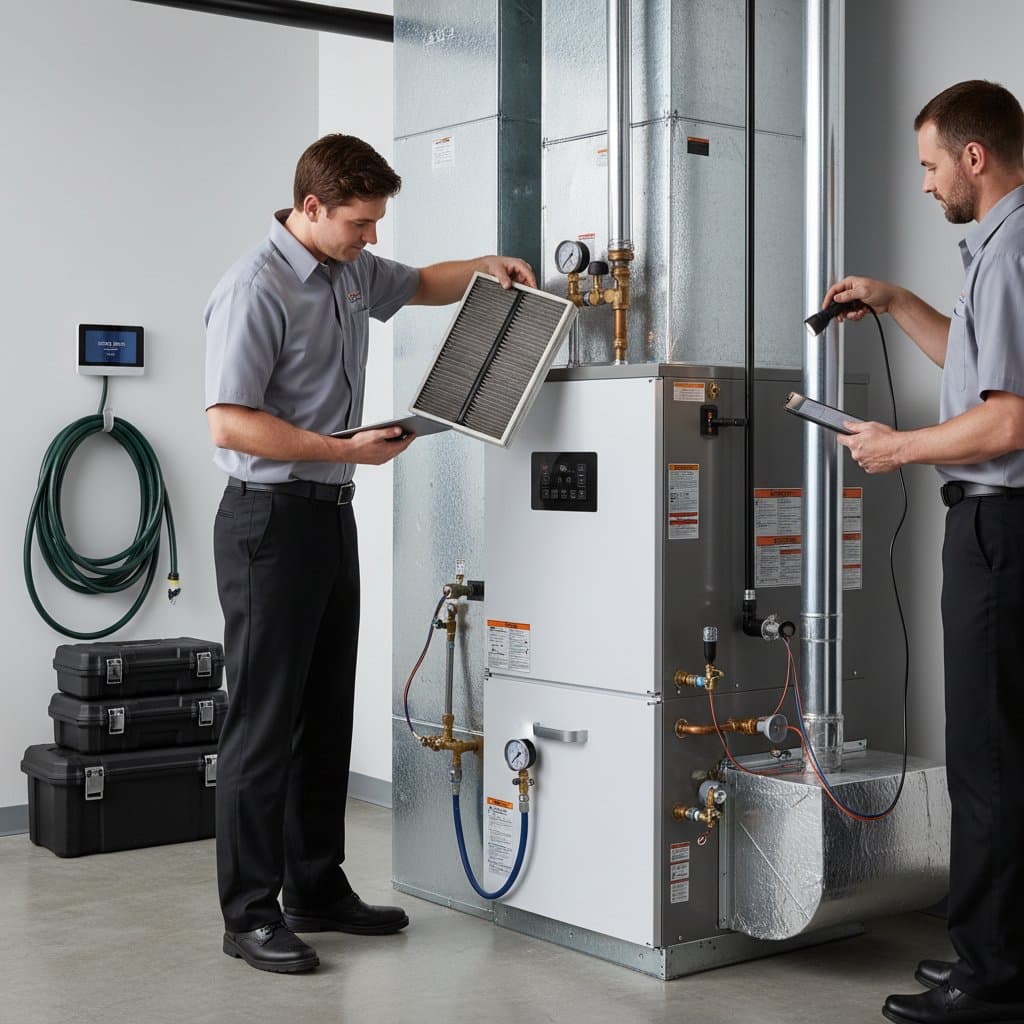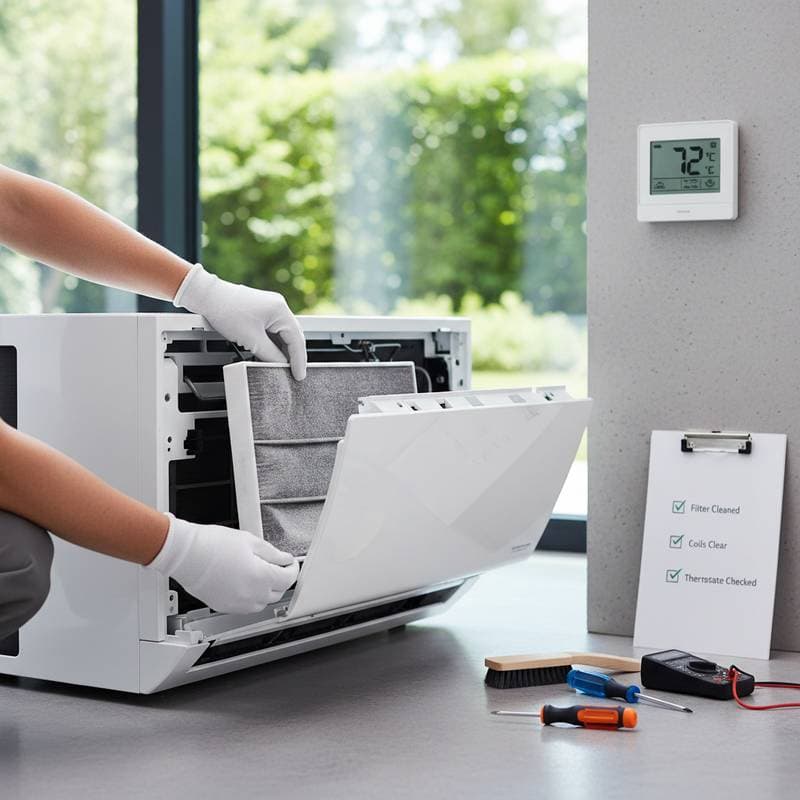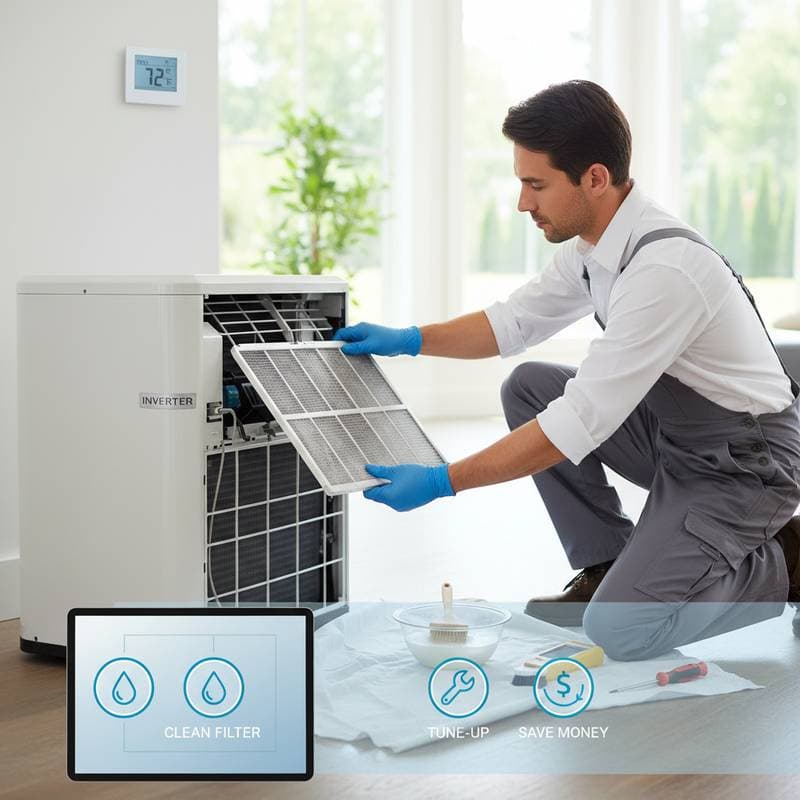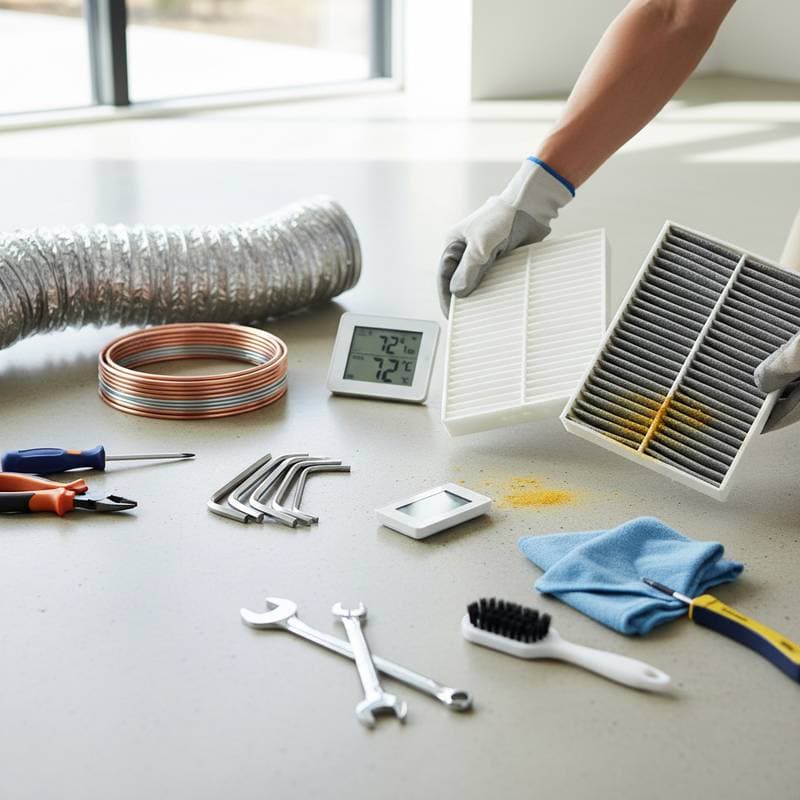Essential Fall HVAC Checks to Avoid Winter Heating Disruptions
As temperatures decline, a properly maintained heating system ensures your home remains comfortable, secure, and energy-efficient. Numerous homeowners delay furnace testing until the initial chilly evening, only to encounter malfunctions or inefficiencies. Conducting a thorough fall HVAC inspection eliminates such issues. This guide outlines critical inspections, associated costs, and practical maintenance strategies to sustain optimal system performance throughout the season.
Fall maintenance not only averts breakdowns but also optimizes energy use. Professional services typically range from $75 to $200, depending on location and system complexity, while DIY efforts require minimal investment in basic tools. By addressing potential problems early, homeowners achieve substantial savings on utility bills and repair expenses.
Critical Components for Inspection
A comprehensive fall HVAC evaluation examines both interior and exterior elements. Professionals or informed homeowners should prioritize these components to identify wear and ensure functionality.
1. Air Filters
Clogged air filters restrict airflow, compelling the system to operate under strain. Replace disposable filters or clean reusable variants every one to three months, based on usage and environmental factors. Examine the filter against a light source; if visibility through it proves impossible, immediate replacement becomes necessary. Opt for high-efficiency particulate air filters to trap finer allergens and pollutants, which proves especially beneficial during winter when indoor air circulation dominates.
Regular filter maintenance enhances overall system longevity and indoor air quality. Neglecting this simple task can increase energy consumption by up to 15 percent, according to industry standards.
2. Thermostat Calibration
A miscalibrated thermostat leads to energy waste and inconsistent temperatures. Adjust the setting upward by two to three degrees and observe the furnace response; delays in activation or excessive temperature swings indicate the need for adjustment. Modern smart thermostats incorporate diagnostic tools for self-verification, whereas older mechanical models require precise manual calibration using a thermometer for accuracy.
Proper calibration aligns with programmable schedules to maintain efficiency. For instance, lowering settings when away from home conserves energy without sacrificing comfort upon return.
3. Blower Assembly
The blower circulates air via ductwork, and accumulated dust on fan blades or motor components diminishes efficiency while potentially causing vibrations or unusual sounds. Disconnect power at the breaker prior to accessing the compartment. Employ a soft-bristle brush or vacuum with a hose attachment to remove debris gently, avoiding damage to delicate parts.
Cleaning the blower improves airflow and reduces strain on the motor. Perform this task annually to prevent premature wear and maintain quiet operation.
4. Burner and Flame Sensor
Examine the burner assembly for signs of rust, excessive soot, or debris accumulation. The flame must burn steadily with a blue hue; yellow tips or flickering suggest incomplete combustion. A soiled flame sensor may interrupt ignition sequences; clean it carefully using fine-grade steel wool and a soft cloth to eliminate residue without scratching the surface.
If a gas odor emanates from the burner area, immediately deactivate the system and evacuate the premises. Contact a licensed technician or emergency services without delay, as gas leaks pose severe risks.
5. Heat Exchanger
The heat exchanger transfers warmth from combustion gases to circulating air, and fissures within it can release carbon monoxide into living spaces. Visual assessments often detect corrosion, warping, or unusual discoloration on the surface. Certified professionals deploy combustion analysis tools to verify proper gas venting and detect invisible cracks through pressure testing.
Homeowners should never attempt internal heat exchanger repairs due to safety hazards. Annual professional inspections confirm compliance with safety codes and prevent hazardous exposures.
6. Ductwork and Vents
Obstructed vents or leaking ducts result in imbalanced heating and higher energy demands. Inspect all room vents to ensure they remain unobstructed by furniture, curtains, or accumulated dust. For visible duct sections, identify separations at joints and apply mastic sealant or foil-backed tape for durable repairs; steer clear of cloth or plastic alternatives that degrade over time.
Sealing ducts can recover up to 20 percent of lost efficiency. In attics or basements, use insulation wraps on uninsulated sections to minimize heat loss.
7. Outdoor Unit and Drain Lines
For systems featuring heat pumps or air handlers with exterior components, remove debris such as leaves, branches, or animal nests that impede operation. Maintain a clearance of at least two feet around the unit to facilitate unrestricted airflow. Inspect condensate drain lines for blockages, which can lead to internal water damage; flush lines with a vinegar solution to dissolve mineral buildup.
Routine clearing prevents efficiency drops and protects against freeze-related issues. In colder climates, consider insulating exposed drain pipes to avoid winter clogs.
Frequent Issues Detected in Fall Inspections
Proactive checks uncover problems before they escalate, sparing homeowners from urgent disruptions. Technicians commonly identify the following concerns:
- Worn blower belts that produce high-pitched squeals during operation
- Blocked condensate drains resulting in excess moisture and potential mold growth
- Fractured heat exchangers that compromise air quality and safety
- Defective igniters failing to initiate the heating cycle
- Frayed or loose electrical connections causing sporadic shutdowns
Addressing these during routine visits typically costs less than emergency interventions, which can exceed $500. Early fixes extend equipment life and enhance reliability.
Essential Safety Protocols for Maintenance
Heating system servicing involves risks from fire, gas, and electrical sources. Adhere to these guidelines to minimize hazards:
-
Deactivate power supply at the main breaker before inspecting or cleaning internal components.
-
In the presence of gas odors, evacuate immediately and summon assistance from the utility company or emergency responders from a safe distance.
-
Refrain from modifying gas valves, control boards, or wiring without specialized certification.
-
Store combustible items, such as paint or cleaning supplies, at least three feet from the furnace.
-
Verify the functionality of carbon monoxide alarms immediately following any maintenance activity.
These measures safeguard both personnel and property. Install or replace batteries in smoke and CO detectors biannually for ongoing protection.
Insights from Homeowner Experiences
Forums dedicated to home maintenance frequently feature accounts of fall inspections averting crises. One individual described discovering a deteriorating blower motor during a routine check, which averted a complete winter outage. Another user identified a minor gas valve leak that technicians repaired on-site, eliminating the threat of an emergency response fee.
Such narratives underscore the value of seasonal diligence. Participants often note that investing in fall service yields peace of mind and tangible financial returns through avoided repairs.
Indicators Requiring Prompt Professional Service
Certain symptoms signal underlying issues that demand immediate evaluation. Arrange for technician visits if you observe:
- Unusual smells, including burning or sulfur-like odors from vents
- Short cycling, where the furnace activates and deactivates rapidly
- Cool air emanating from supply registers despite system operation
- Abnormal sounds like banging, rattling, or grinding during runtime
- Elevated energy bills without changes in usage patterns
Swift intervention halts progression to major failures. Delaying action risks discomfort, higher costs, and potential safety threats.
Strategies for Sustained System Performance
Consistent fall maintenance forms the foundation for year-round efficiency. Schedule annual professional tune-ups to benchmark system health and address emerging wear. Complement these with monthly visual checks on filters and vents to sustain peak operation.
Homeowners who implement these practices report up to 20 percent reductions in winter heating costs. Beyond savings, reliable systems contribute to a healthier indoor environment and reduced environmental impact through optimized energy use. Commit to this routine to enjoy uninterrupted warmth and long-term value from your HVAC investment.





